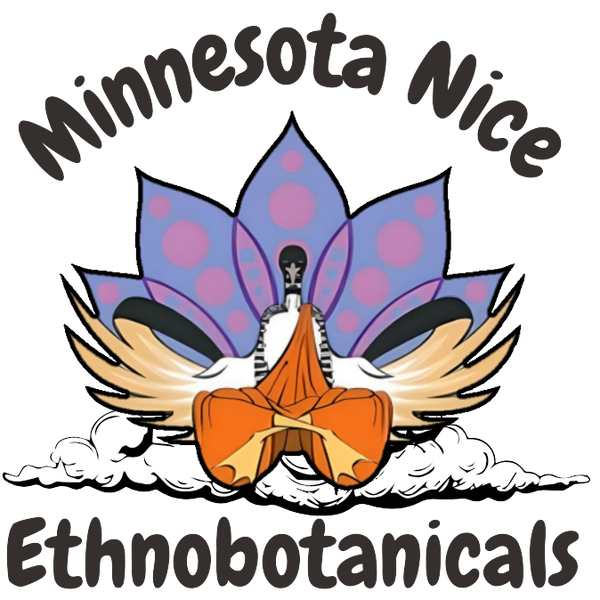
History of Amanita Muscaria
Share
History of Amanita Muscaria
Though widely recognized as Super Mario’s power-up symbol, Amanita muscaria has a long, fairy-tale-like history predating the Italian plumber. Often called the fly agaric due to its natural ability to attract and poison insects, many ignore the rich history of Amanita muscaria. Yet it remains a fungus worth knowing about, with ancient uses far greater than a simple fly trap.
The Deal with the Trees
Today fly agaric can be found all over the world, its bright red cap and white warts reminding passers-by of dreamy fairy tales and beautiful Victorian paintings. However, the mushroom is native to the cold, temperate forests of the Northern Hemisphere. It is in these kinds of environments that the fungus formed a connection with the trees.
Lurking in the shade of birch, pine, and spruce trees, the amanita muscaria shares its minerals with the trees via connected roots. In return, the trees provide the fungus with carbohydrates. The two need each other’s help to thrive – a symbolic relationship if ever there were one.
Siberian Shamans and the Ceremonial Mushroom
Many of the historical accounts of Amanita muscaria are based on travels to Siberia and native reports. It’s clear in these areas that the fly agaric was never a common mushroom. Rather, it was a treasured item, valued highly within Sámi culture.
As a raw food, Amanita muscaria is full of psychoactive muscimol - a toxic compound that causes hallucinations as well as other unpleasant physical symptoms. When dried or parboiled, the toxin is weakened and can be consumed in moderation. Though the effects are still very strong.
Western shamans made use of the hallucinogenic relaxant effects as an alternative way of reaching trance. For this reason, amanita muscaria was limited only to the shamans.
In the east though, shamans reached their trance via drums, so the fungus was more widely available if you could afford it. After all, it still held high value in the east meaning that peasants were unable to access the effects firsthand. What they could afford was the shaman’s urine which would carry a diluted version of the fly agaric’s toxins. So, peasants in the east would buy and consume shaman urine ceremoniously.
Certain Sámi tribes such as the eastern Koryak told folktales about the origins of amanita muscaria which may have contributed to its high value. One tale recounts the journey of a raven who was tasked with carrying a whale back to its rightful home. The story goes that the deity Vahiyinin – aka Existence – spit on the earth, causing fly agaric to grow and gain its spirit-like capabilities. The raven then used it to complete its task. So exhilarated by the mushroom, the raven convinced the deity to allow it to grow forever so that the children and people of the earth could use it as a learning tool.
Hence why the shamans often used amanita muscaria to reach their trances.
Santa Clause or Mushroom?
There is an uncanny connection between Sámi traditions revolving around amanita muscaria and the Christmas fairy-tale figure.
Many Sámi tribes lived in the cold, northern arctic region. It is here that the mushrooms found their native grounds under the pine trees aka Christmas trees. Are you starting to make the connection?
When the winter solstice came around, the Fly Agaric’s were handed out as gifts by shamans who wore red and white to reflect the amanita muscaria’s colors. With too much snow to deliver the presents door to door, shamans would climb on the roof of every yurt and post them down a chimney-like hole in the middle of the night.
Perhaps the Santa we know today doesn’t carry every Sámi winter solstice tradition but there may be some truth in the figure’s fungi origin.
A Divine Drink
The Sanskrit hymns that make up the Hindu text the Vedas mention a powerful drink able to give divine powers to its consumers.
The drink’s (or Soma’s) ingredients have been argued over for decades, with some suggesting it is the Amanita muscaria that is described.
There are accounts within Hindu cultures of religious leaders drinking the Soma and then peasants consuming their urine, much like in eastern Siberia.
The effects of the drink also match that of the Fly Agaric mushrooms used in Siberia, which were interpreted as a spiritual experience within Hindu communities.
The Symbol Of Death
Aside from religious use, amanita muscaria was seen as fit for a King – specifically King Charles IV of Hungary.
It is said that the King’s last meal was comprised mostly of Fly Agaric and led to his eventual death.
This triggered the Austrian war of succession and eternalized cap mushrooms as the symbol of death in historical records, though they have caused few recorded deaths.
